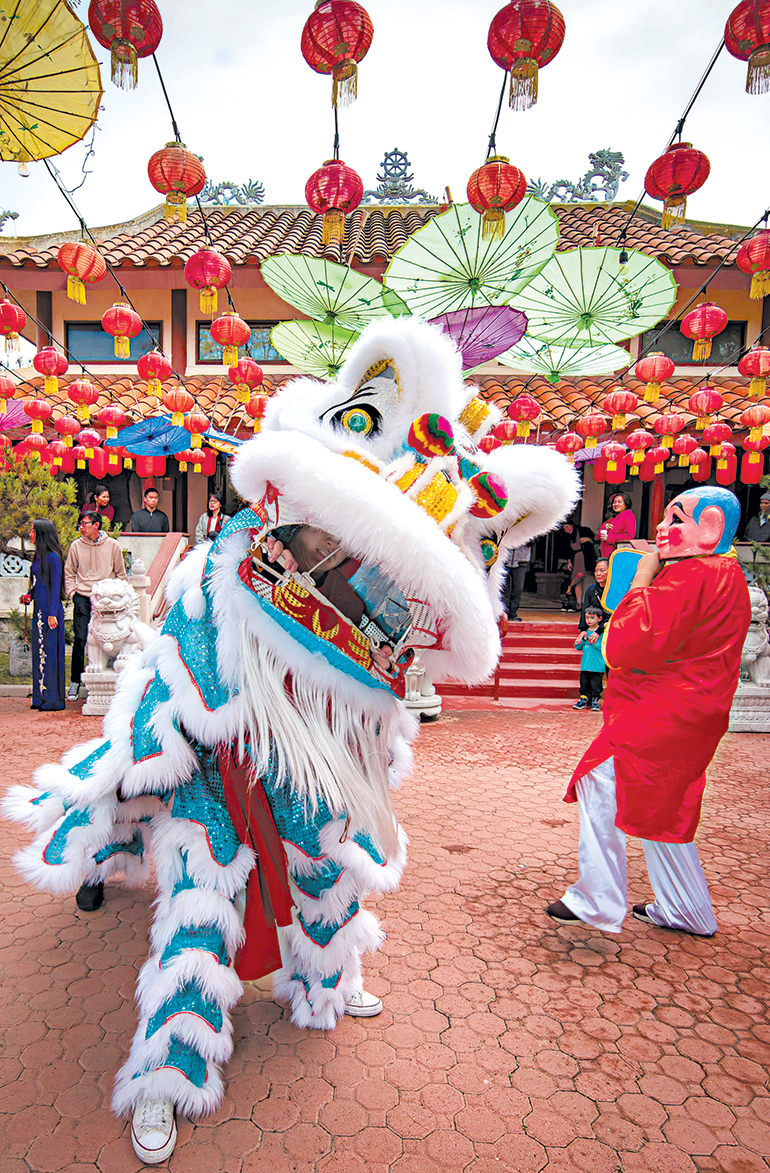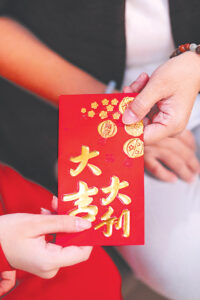Celebrating Chinese New Year’s timeless traditions

It is something of a wonder that billions of people worldwide observe Lunar New Year each year. After all, this is a custom that is centuries- — if not millennia- — old, rooted in mythology and folklore, a custom that still flourishes in the era of space travel and artificial intelligence.
A huge beast named Nian, according to legend, tormented Chinese communities for many years at the end of each year, demolishing homes and slaying helpless peasants. However, since the people have discovered that loud noises and bright lights scare the beast away, a yearly tradition was born.
Nowadays, such traditions persist in the brilliant fireworks and lively annual celebrations. Though being in winter for most of China, the Chinese New Year is popularly known as the Spring Festival in China, marking the end of winter and the beginning of spring. The 15-day New Year festivities kick off with a week-long holiday in China, and much like the Western New Year (Jan. 1), the biggest celebration is on New Year’s Eve.
As 2023 will be the Year of the Rabbit — the fourth zodiac animal in the 12-year periodic sequence of animals which appear in the Chinese calendar — many of the decorations will be related to the rabbit and what it represents.
In the Philippines, the celebrations find their zenith near Binondo. During this time, every street, building, and home is decorated with red, the main color of the festival, while performers hold dragon and lion dances in the crowded streets.
From New Year’s Day on, traditional performances including dragon dances, lion dances, and imperial performances can be seen in many Chinese-populated communities. Such performances have a long history on their own. Chinese dragons are thought to be a representation of Chinese culture and stand for strength, dignity, fertility, knowledge, and good fortune. The dragon was a symbol of imperial authority in numerous legends since it is both an awesome and benevolent being. The motions used in the dragon dance generally represent historical occasions when dragons displayed strength and majesty.
The night before the new year is a special occasion for many Chinese households. Everyone is expected to be at home to participate in the New Year’s Eve “reunion dinner,” which is considered to be the most significant meal of the year, and celebrate the festival with their family. Families often have supper together at a certain relative’s home, but a rising number of families are eating out on New Year’s Eve. Many of them require bookings months in advance owing to the occasion.
Some wealthy families would even invite a professional chef to prepare at their home. On New Year’s Eve, chefs are frequently occupied running from one home to another while preparing meals for many families.

In the Philippines, the most popular dish served during the celebrations is a sticky rice delicacy made from glutinous rice known as tikoy or nian gao.
Afterwards, families typically watch the Spring Festival Gala together, one of the most watched TV shows in China.
During this time, people also exchange gifts, the most common of which are the customary red envelopes with money inside. Called hong bao in Mandarin, these envelopes are often only given to children or unmarried adults with no job. If you are single, working adult, you are expected to give these to your younger relatives.

This tradition lives on in the Philippines, where they are called ampao. The red envelope contains the wishes for good fortune, safety, and well-being for the year. Children are the only ones who traditionally receive red envelopes from their elders.
Of course, at the strike of midnight come the dazzling display of fireworks. Anywhere you are on the globe, fireworks and firecrackers are launched on the first minute of the Chinese New Year. From public displays in major cities to millions of private celebrations in China’s rural areas, setting off firecrackers and fireworks is part of the celebration.
Other celebrations to look forward to
There are other significant days of the 15-day Chinese New Year Festival in addition to New Year’s Eve. For instance, it is thought that the gods of prosperity descend from the heavens on the fifth day of the new year. The event is known as Jie Cai Ceng, or Welcoming the Gods of Wealth and Prosperity, and people make every effort to commemorate it. Businesses participate in the lighting of firecrackers at this time because they believe it will bring them luck and wealth for their enterprise.
The 15th day of the New Year is known as Yuan Xiao Jie or the Festival of Lanterns, and it marks the end of the Chinese New Year celebrations. All types of lanterns are lit throughout the streets and often poems and riddles are often written for entertainment.
Paper lanterns on wheels that are shaped like a rabbit or the year’s zodiac animal can also be seen during the festivities. An old Chinese fable about a goddess named Chang’E who leaped to the moon is symbolized by the rabbit lantern. The goddess brought a rabbit with her because she didn’t want to travel alone. It is stated that on this day you can see the goddess Chang’E and her rabbit on the moon if your heart is pure enough.
Each and every element of the Lunar New Year is imbued with traditional folklore such as this, owing to the centuries of history the tradition brings with it. As time goes on, more of these traditions will evolve and change, and only time will tell what such spectacles they will bring in the future. — Bjorn Biel M. Beltran



